According to data from Champ Consulting, the global LiDAR market size was approximately 16.21 billion yuan in 2020, expected to reach 73.57 billion yuan by 2026. The forecast period from 2023 to 2026 anticipates a compound annual growth rate of 29.55%. The main selling points are in new energy vehicles and intelligent robots. Governments are also gradually adopting LiDAR in some 3D mapping areas to acquire three-dimensional information. With the future development of AI large models, the hardware field will also be iteratively updated. Thus, the enhancement brought by LiDAR is indispensable, indicating a promising outlook for LiDAR technology.
LiDAR can implement a variety of schemes through different combinations of light sources, ranging principles, detectors, and beam manipulation, each with its own advantages and disadvantages. This article focuses on analyzing some beam manipulation schemes.
| LiDAR Light Source | Ranging Principle | Detector | Beam Manipulation |
LED EEL VCSEL | Triangulation Pulsed-based Ranging | PIN PD APD/SPAD/SiPM CMOS Image Sensor CCD Image Sensor | Scanning DOE(Diffractive Optical Elements) Micro Mirror Array Scanning Optical Phased Array Scanning Flash[Instantaneous] |
This article discusses some of the common imaging methods of current LiDAR technologies, broadly categorized into scanning and non-scanning types.
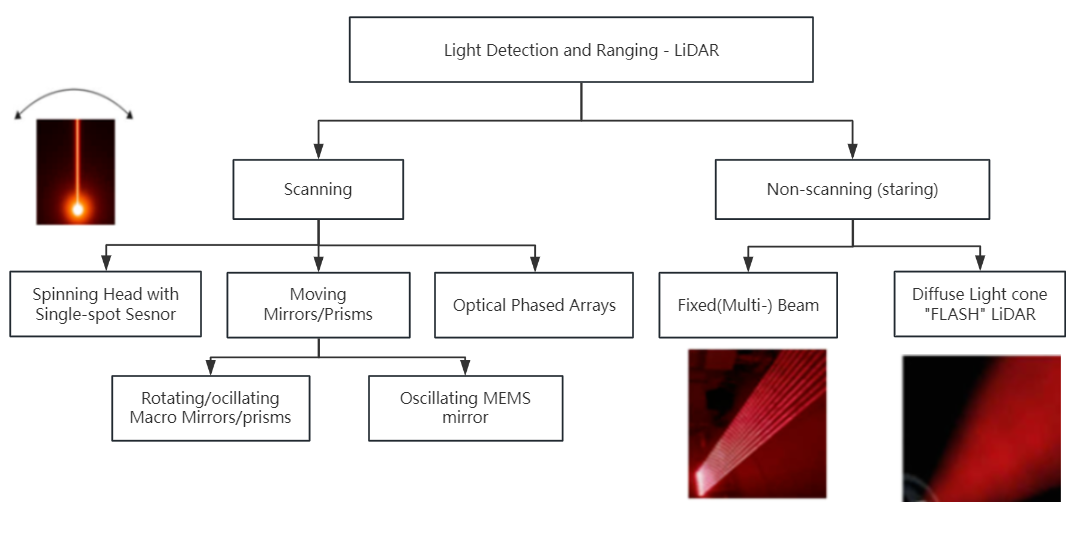
Non-scanning types, including multi-line (multiple lasers) and Flash, illuminate the objects in front simultaneously instead of scanning angle by angle. This approach saves scanning time and shortens imaging speed. However, multi-line requires multiple lasers, increasing costs, and if VCSEL is used, its power limits the detection distance. Flash illumination by a single laser doesn't reach far due to power dispersion. These imaging methods are suitable for short-distance 3D imaging, such as blind-spot radars for cars.
Current main methods include rotational scanning, MEMS (Micro-Electro-Mechanical Systems) mirror scanning, OPA (Optical Phased Array), lens-based focal plane array scanning, and scanning using grating with wavelength tuning.
An early scanning method using mechanical rotation for 360° scanning. It tends to be bulky, costly, and has lifespan stability issues due to constant high-speed rotation. Its advantage lies in its simplicity.
Uses a two-dimensional MEMS micro-mirror, driven by electrothermal, electrostatic, electromagnetic, and piezoelectric effects. This method is mature and widely adopted, with development focusing on reducing the reflective area of MEMS mirrors and increasing scanning frequency.
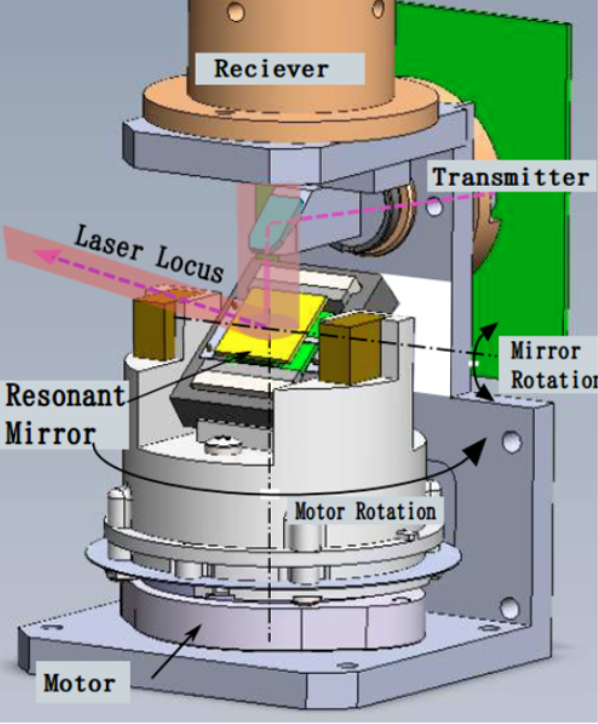
Optical Phased Array, a solid-state scanning method that doesn't require mechanical rotation, works similarly to multi-slit interference. Challenges include minimizing array crosstalk, enhancing scanning precision, expanding scanning angles, and improving thermal stability. Current limitations involve effective long-distance detection due to low on-chip power.
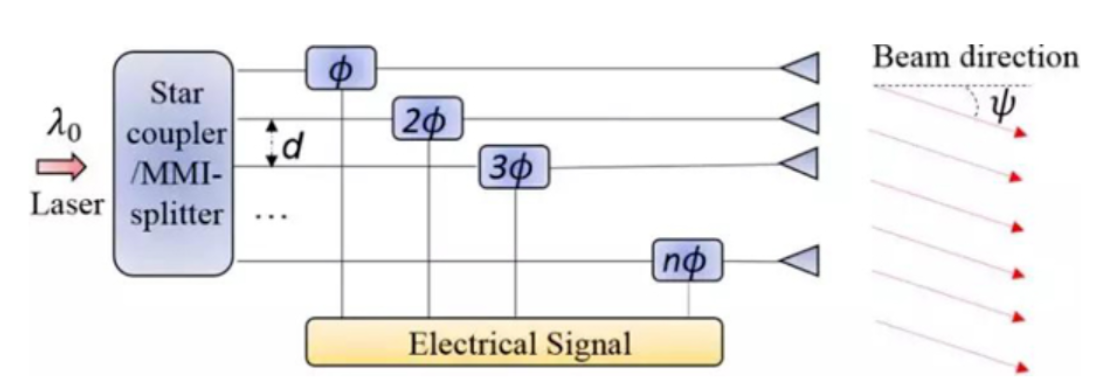
Schematic Diagram Illustrating the Basic Principles of Optically Controlled Phased Array Scanning
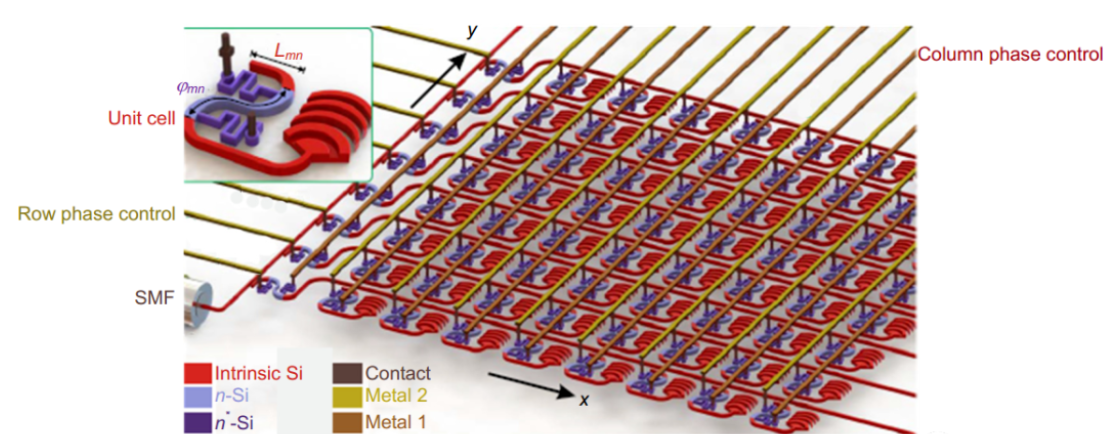
Schematic Diagram of a Two-Dimensional Silicon-Based Optical Phased Array Structure
Integrates optical switches on the lens's focal plane to adjust the exit light angle, determined by the distance between grating centers and focal length. This method allows for one-dimensional scanning.
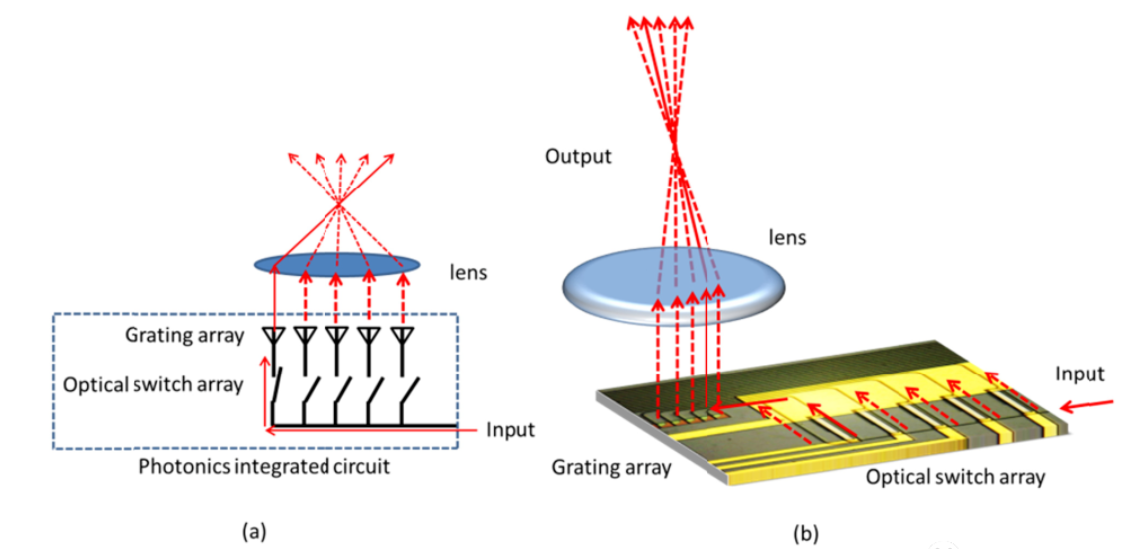
A two-dimensional beam scanning based on switches, with power consumption logarithmic to the number of on-chip emitters. Optimization of grating parameters for greater dispersion remains a challenge.

This article is reprinted from the WeChat public account: Lightigo, Author: klein99
Disclaimer:
We hereby declare that some images displayed on our website have been collected from the internet and Wikipedia for the purpose of promoting education and information sharing. We respect the intellectual property rights of all original creators. The use of these images is not intended for commercial gain.
If you believe that any of the content used infringes upon your copyright, please contact us. We are more than willing to take appropriate measures, including removing images or providing proper attribution, to ensure compliance with intellectual property laws and regulations. Our goal is to maintain a platform that is rich in content, fair, and respectful of others' intellectual property rights.
Please contact us through the following contact information, email: sales@lumispot.cn. We promise to take immediate action upon receipt of any notice and guarantee 100% cooperation to resolve any such issues.
Contact: Lumispot
Phone: +86-15072320922
Tel: +86-510-87381808
Email: sales@lumispot.cn
Add: Bldg 4 No.99 Fu Rong 3rd Road, Wuxi, China